Abstract
1. The firing frequency of polymodal nociceptor units with C-fibre axons was found to increase exponentially with skin temperature as the latter was raised linearly at 1 degree C/sec. Q10 values ranged from 3.6 to 120. 2. Following skin heating to 54--64 degrees C, average firing thresholds fell substantially. This sensitization was accompanied by a 46% increase in interval by interval variability of firing during heat stimulation. 3. Stopping the blood flow to the saphenous area by ligaturing the femoral or saphenous arteries had no significant effect on heat thresholds, on firing patterns during heat stimulation or on variability of firing in sensitized units. There were no changes in continuous, background firing during periods of arterial ligation. 4. It is concluded that if the maintenance of nociceptor heat sensitization depends on the continuous local production of chemical substances, these substances must either be rapidly broken down locally or able to move only slowly into blood vessels.
Full text
PDF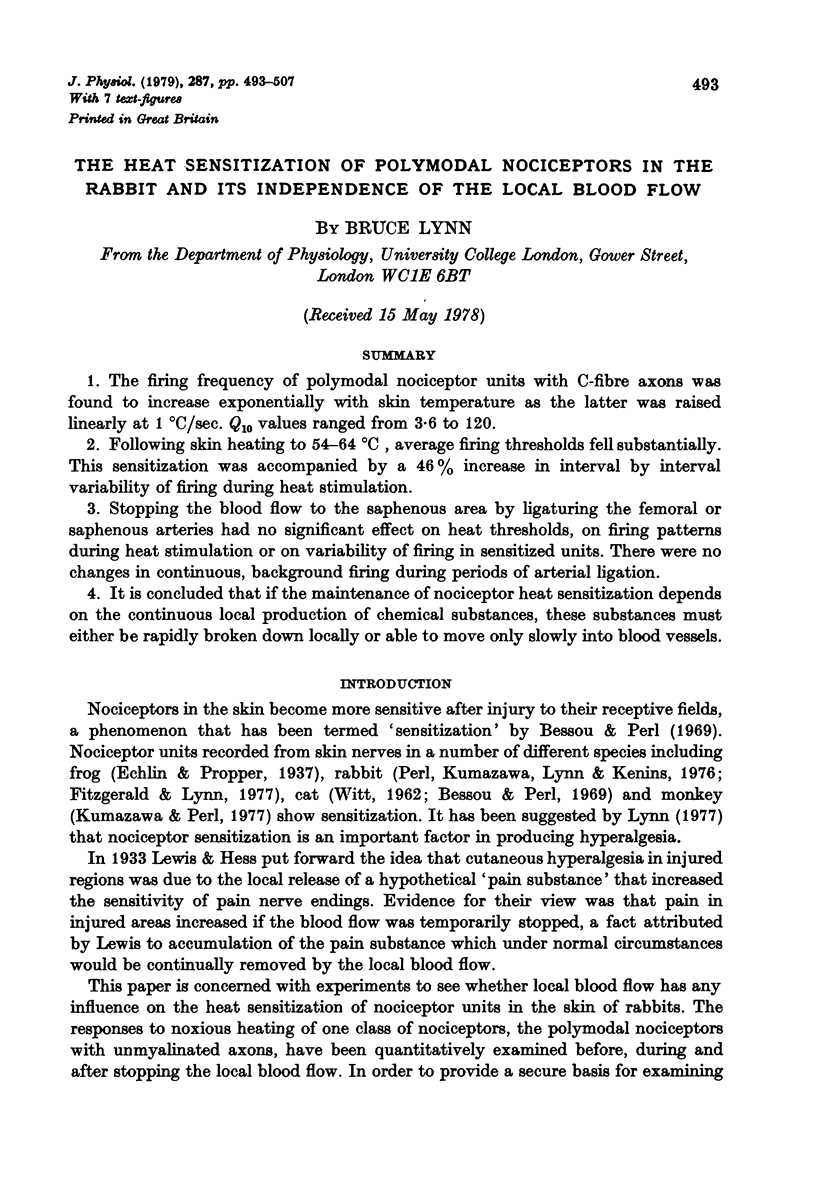
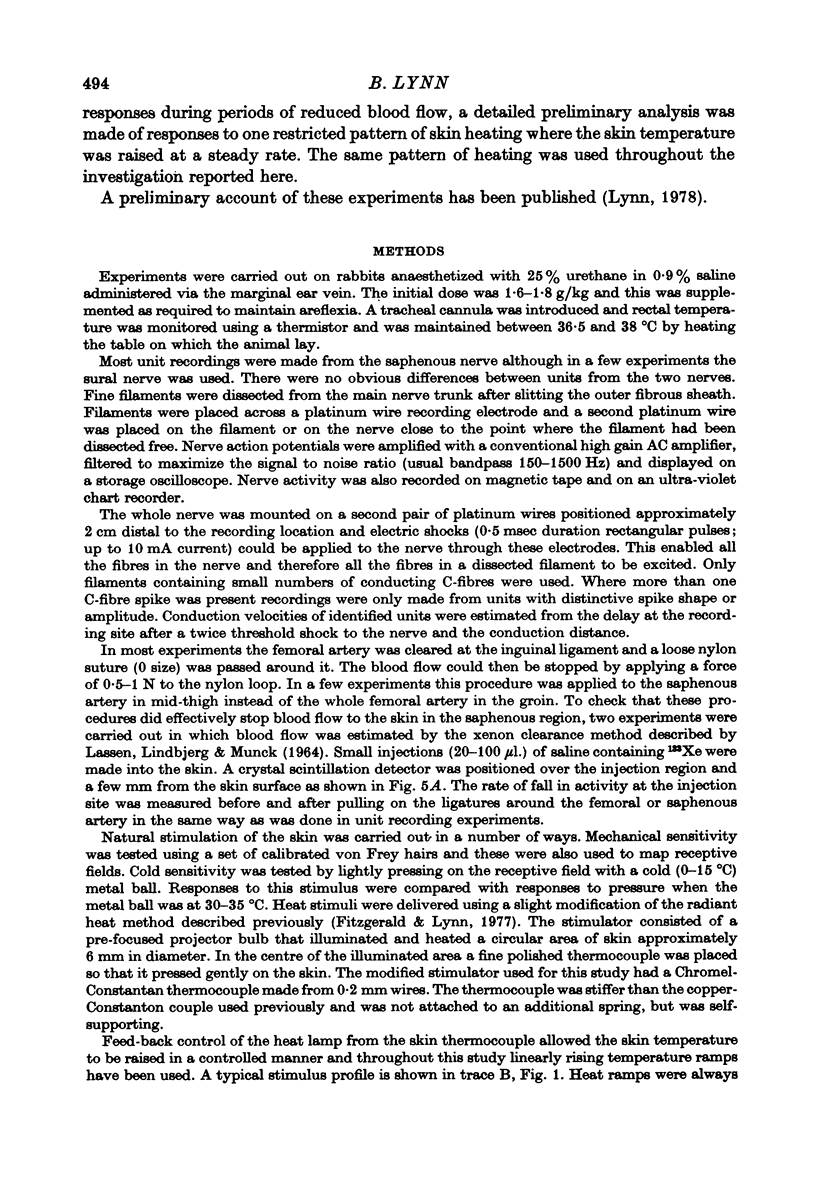
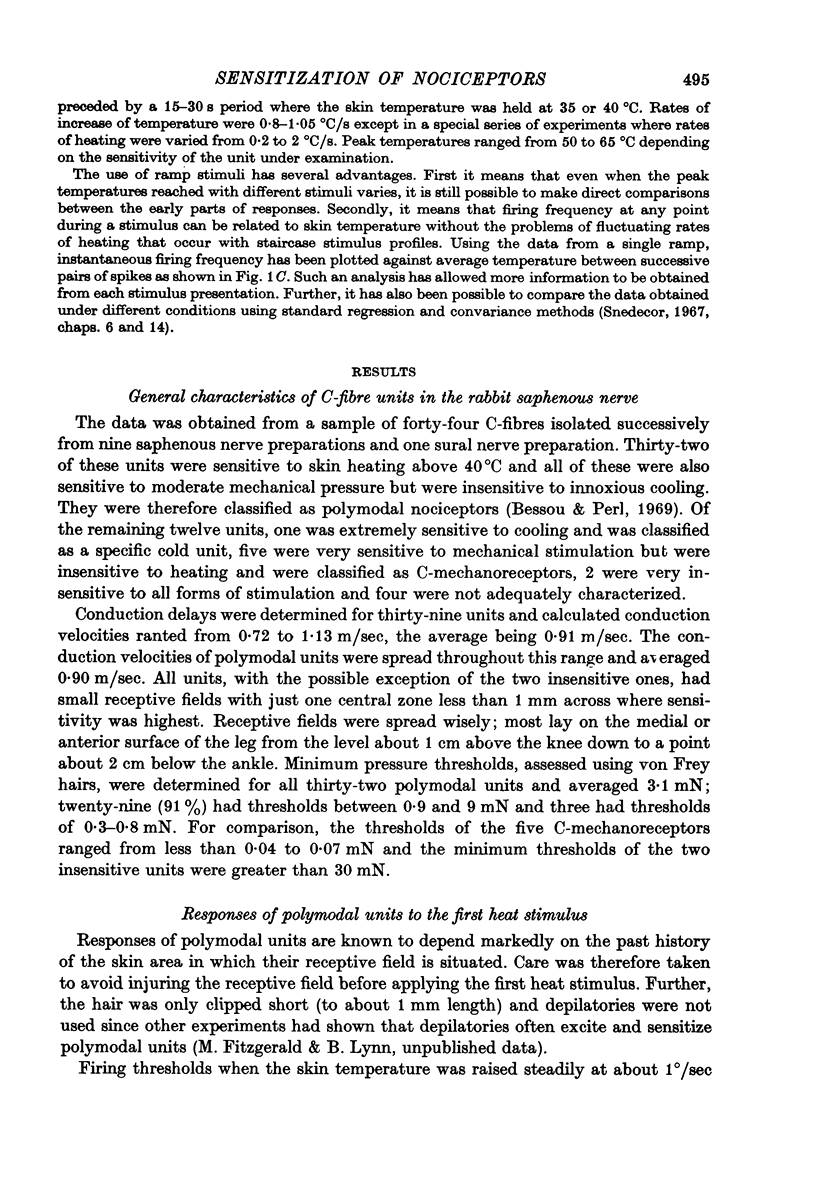
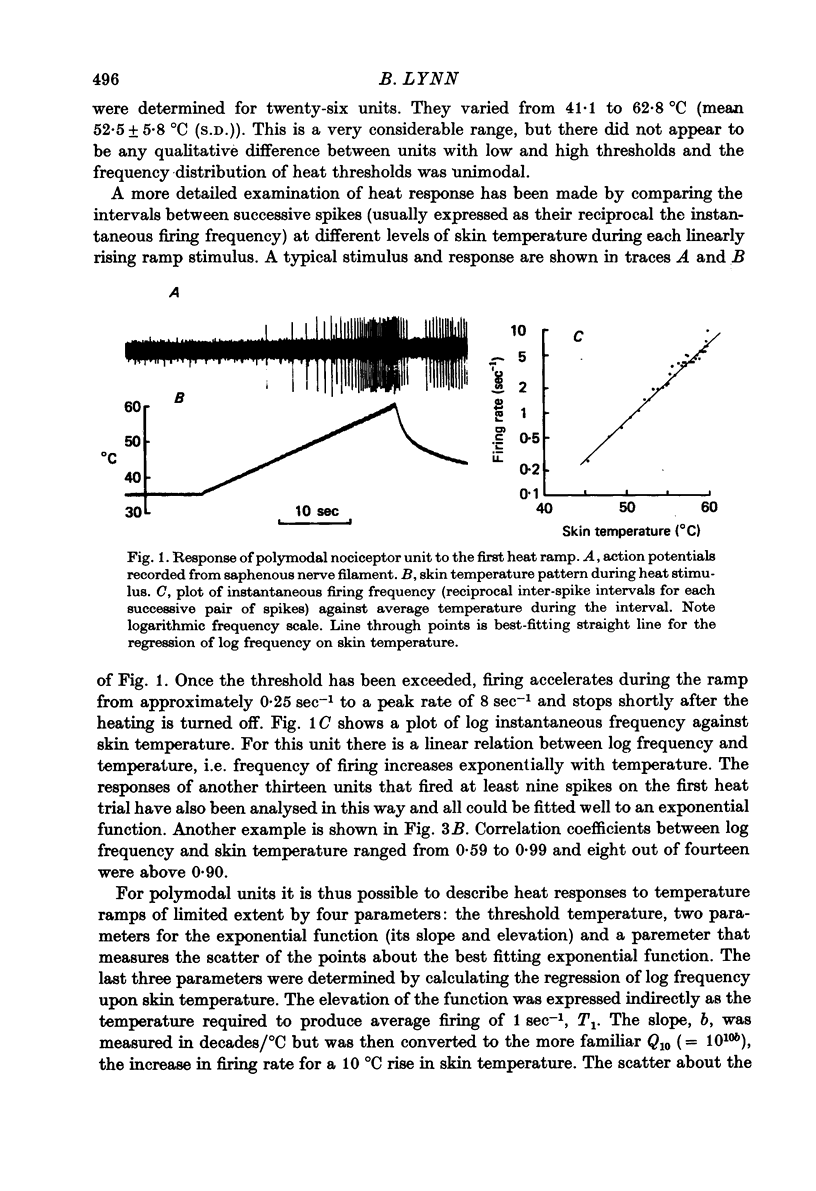

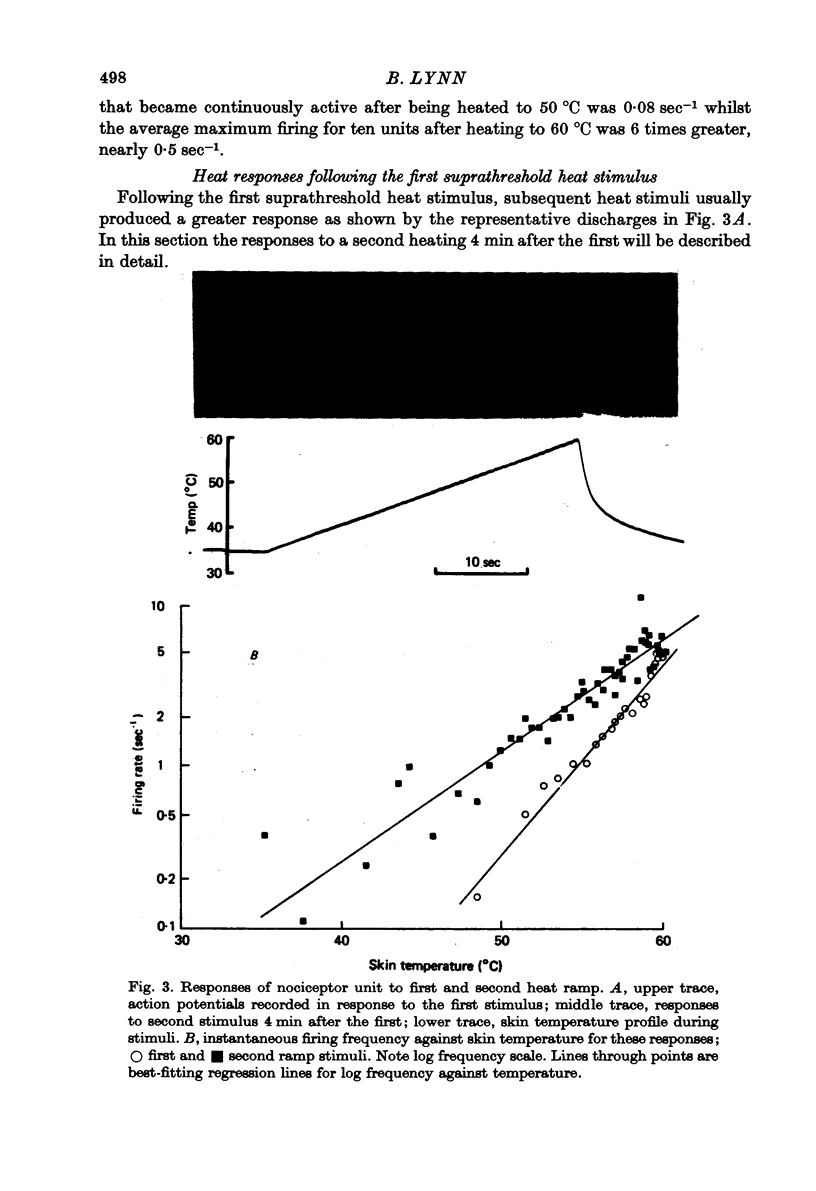
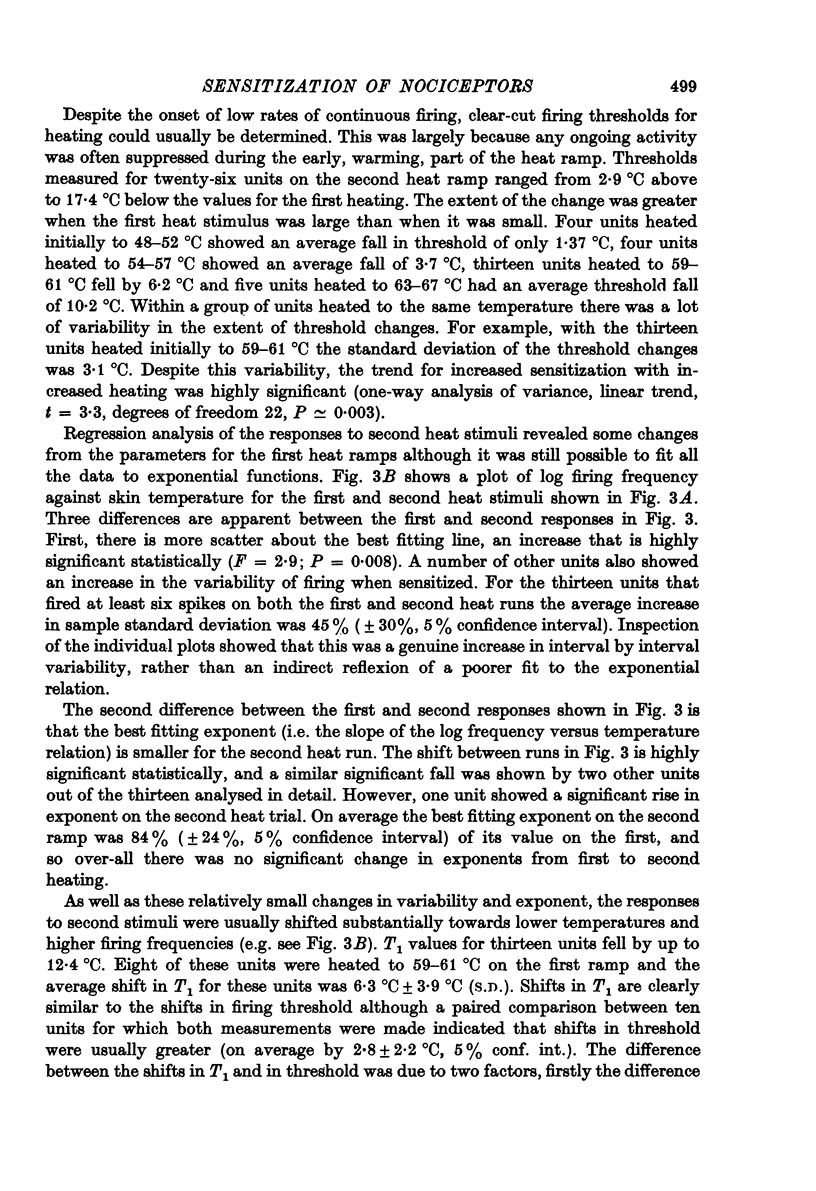
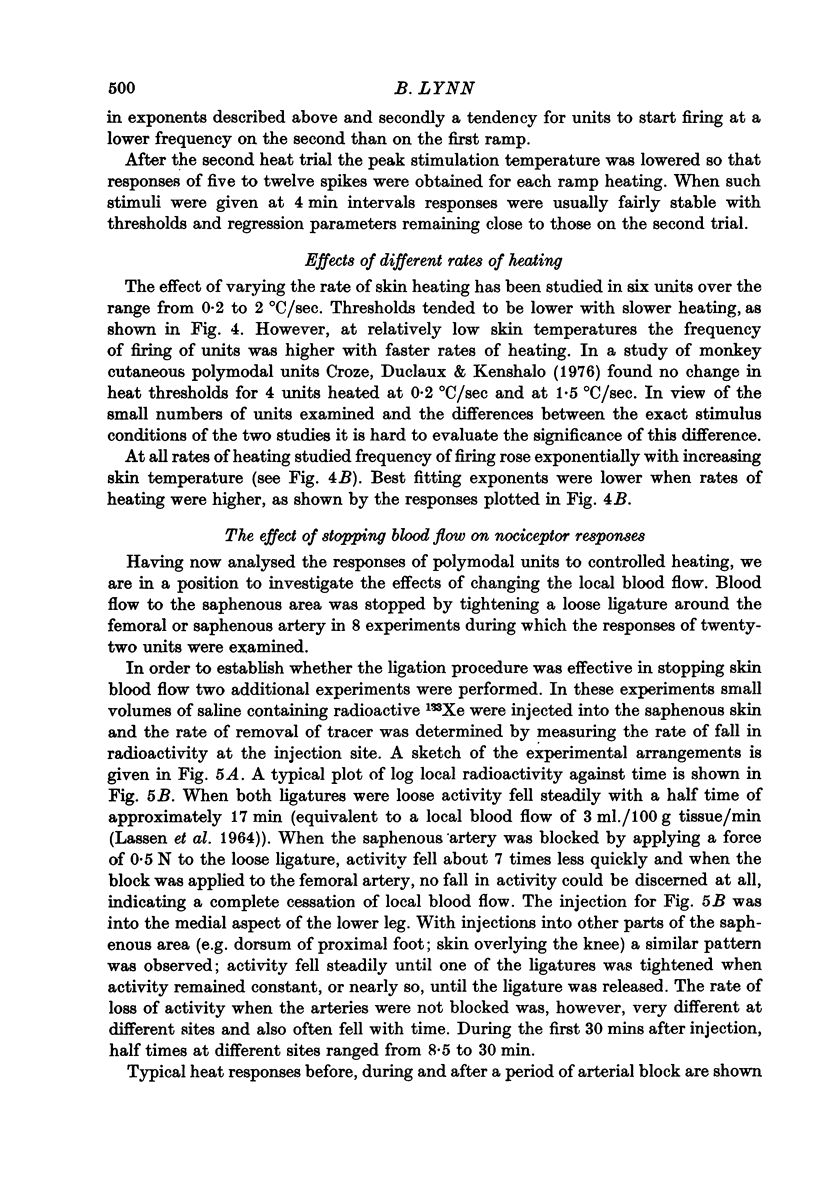
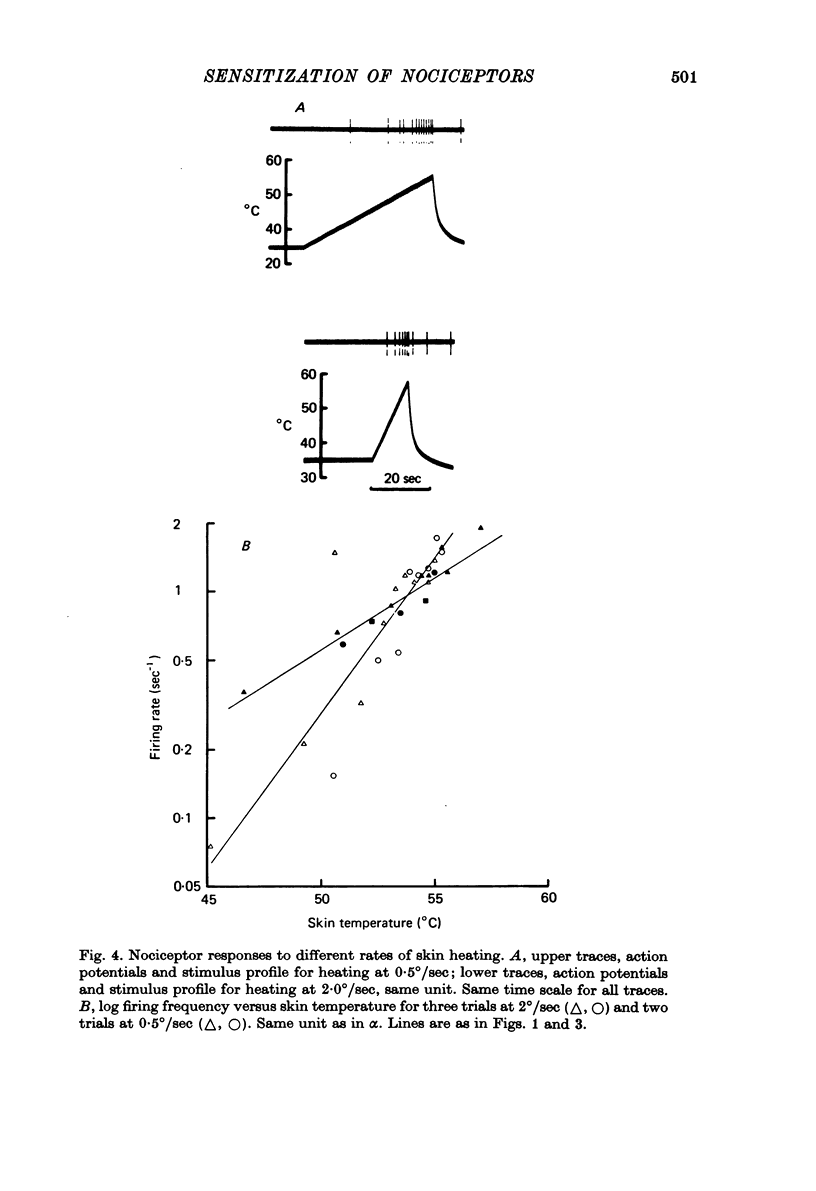
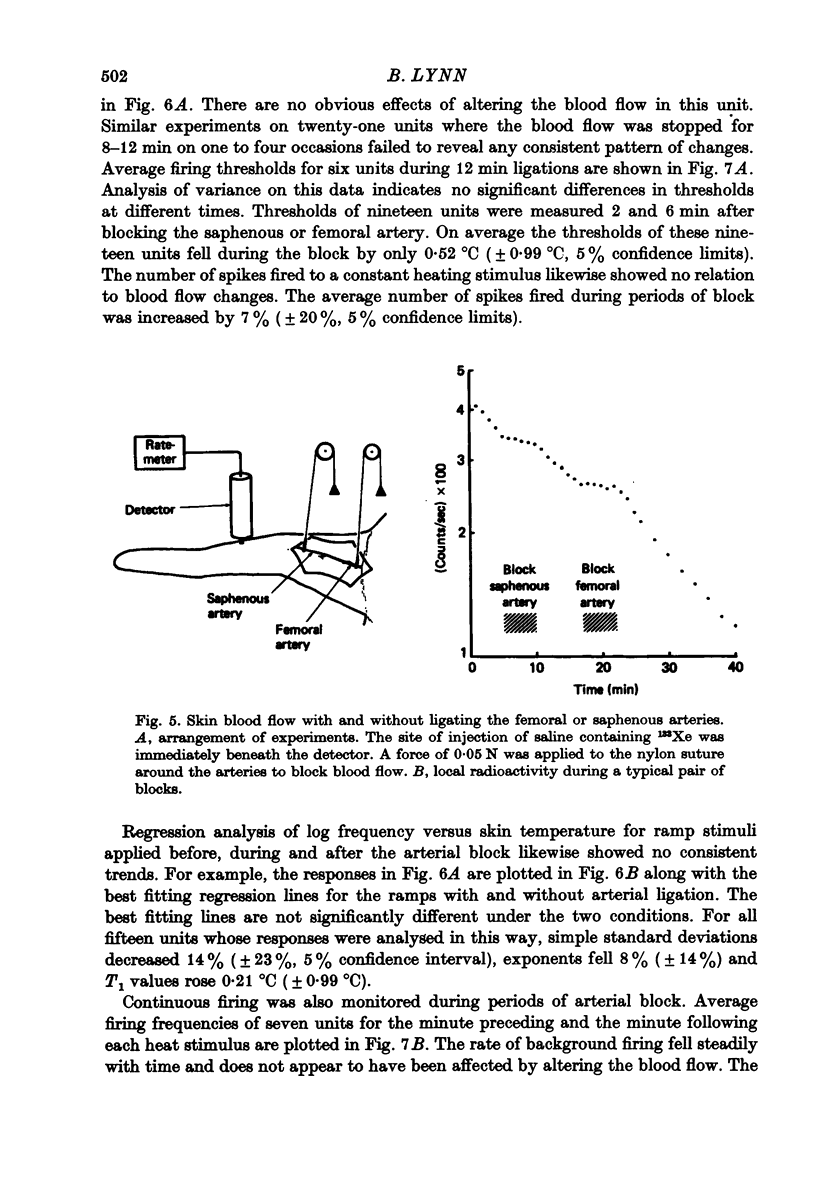
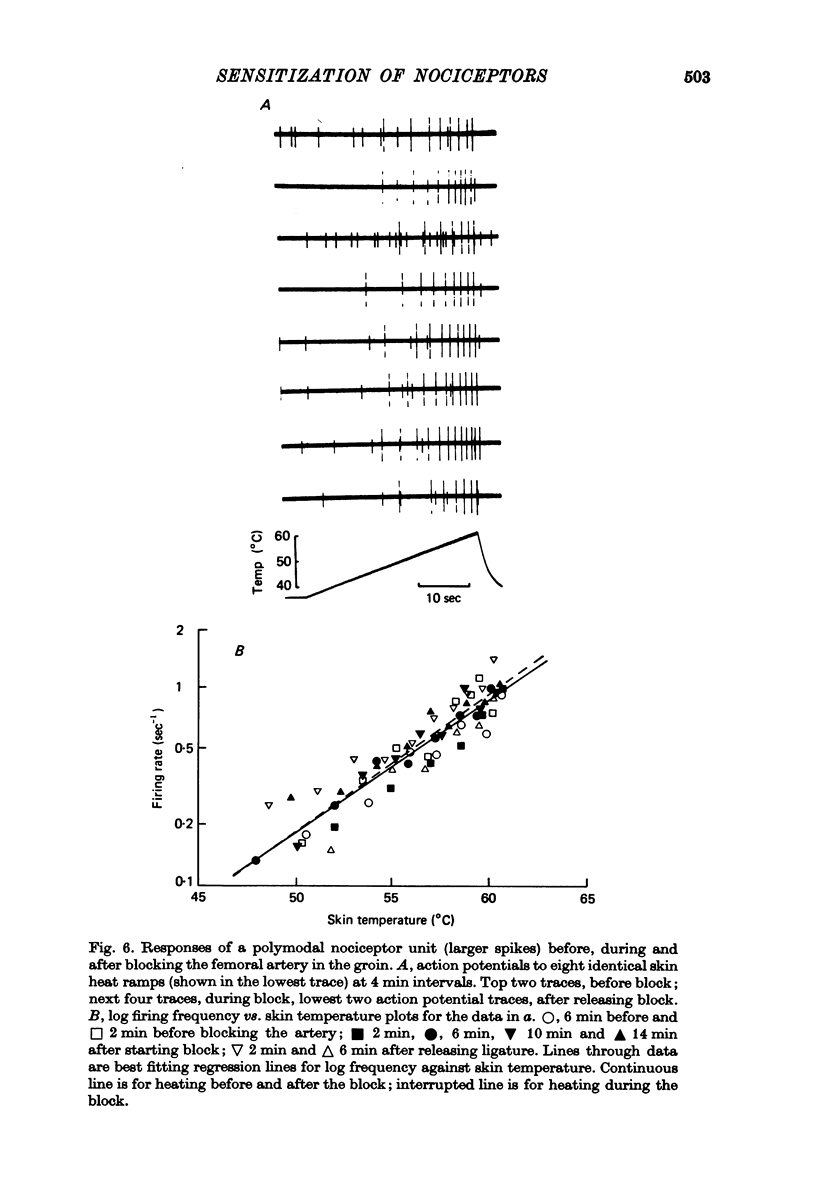
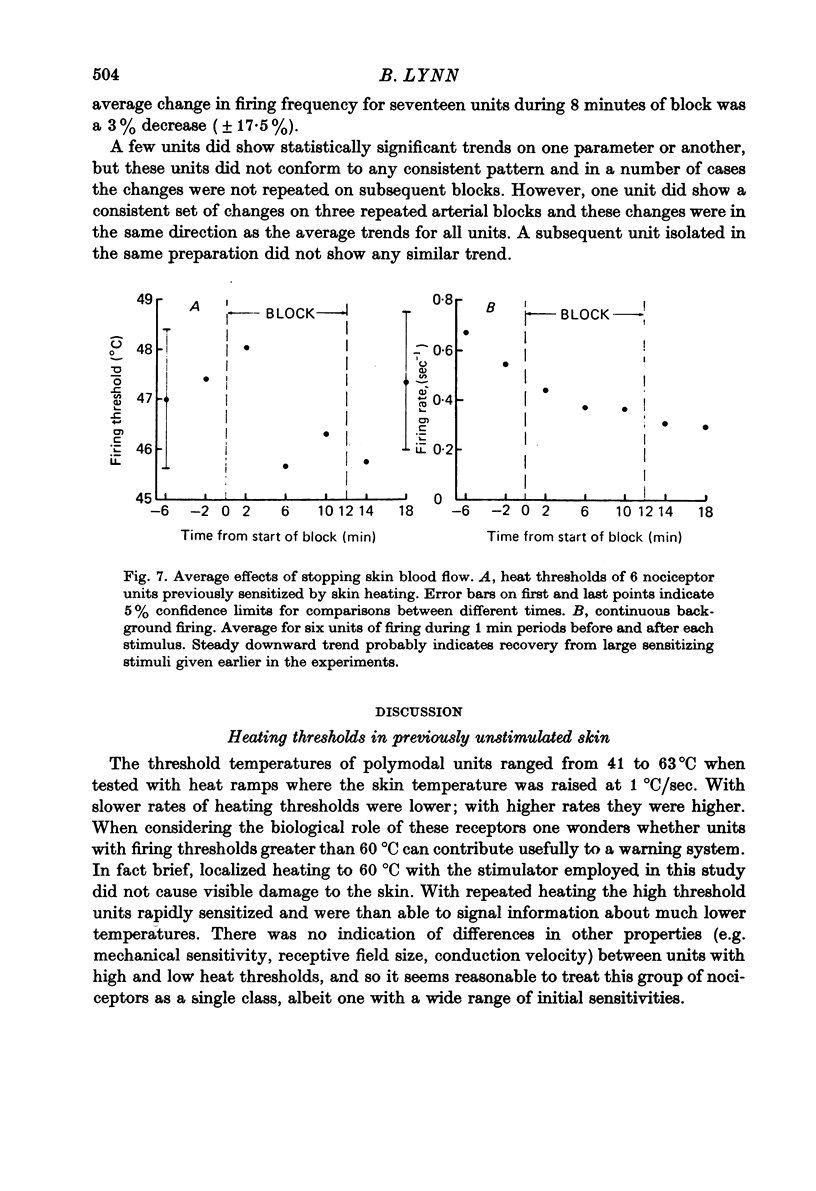
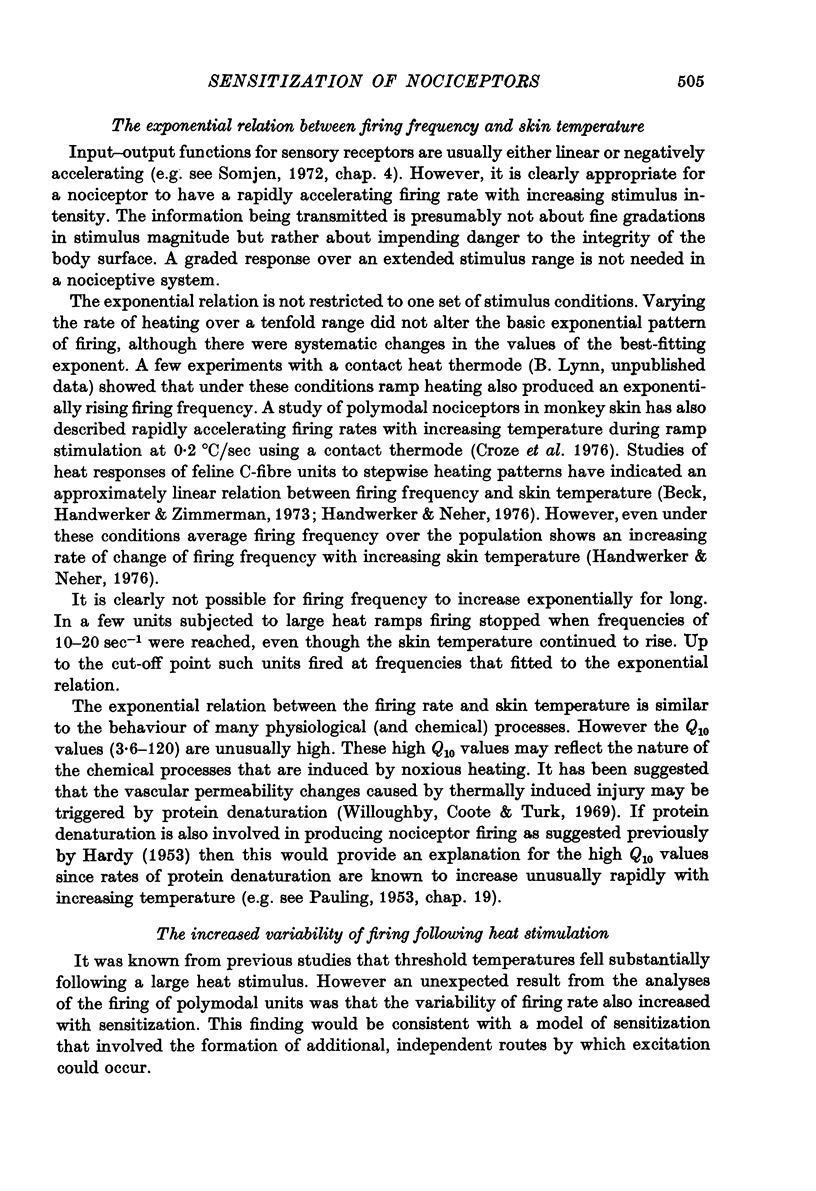
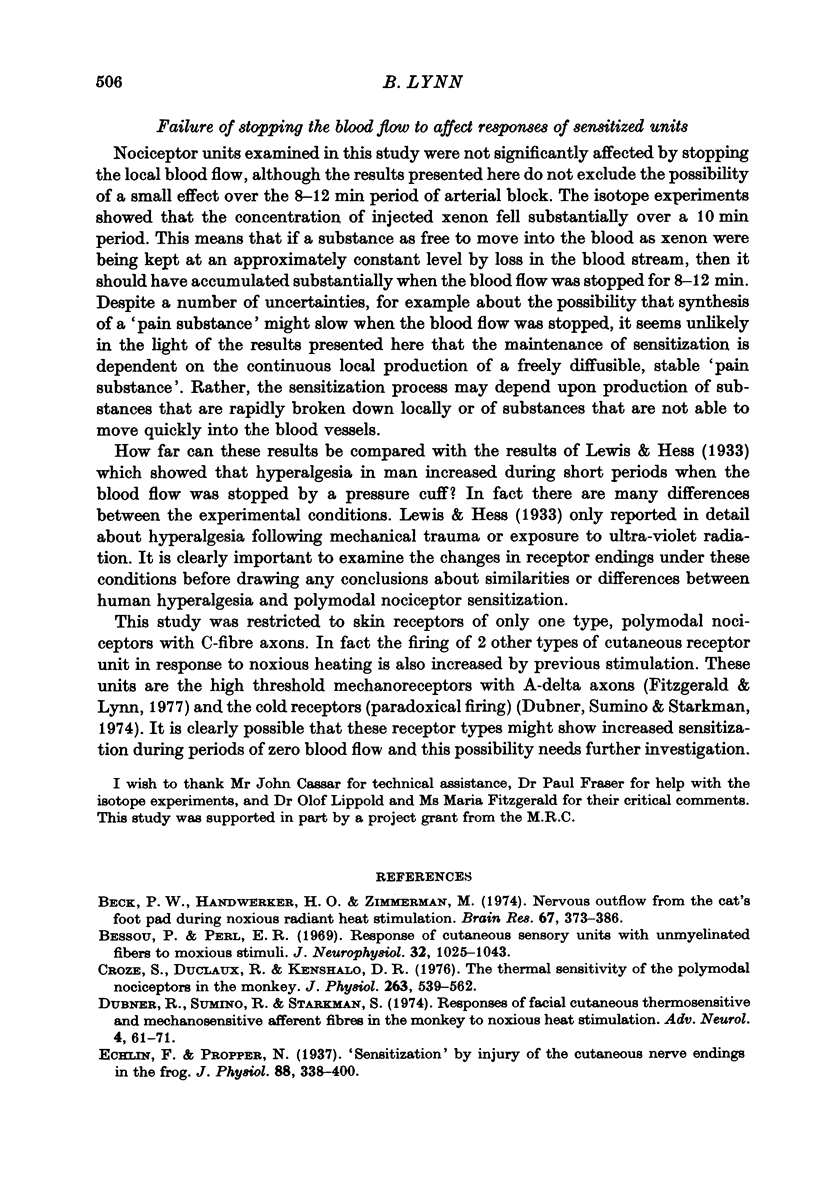
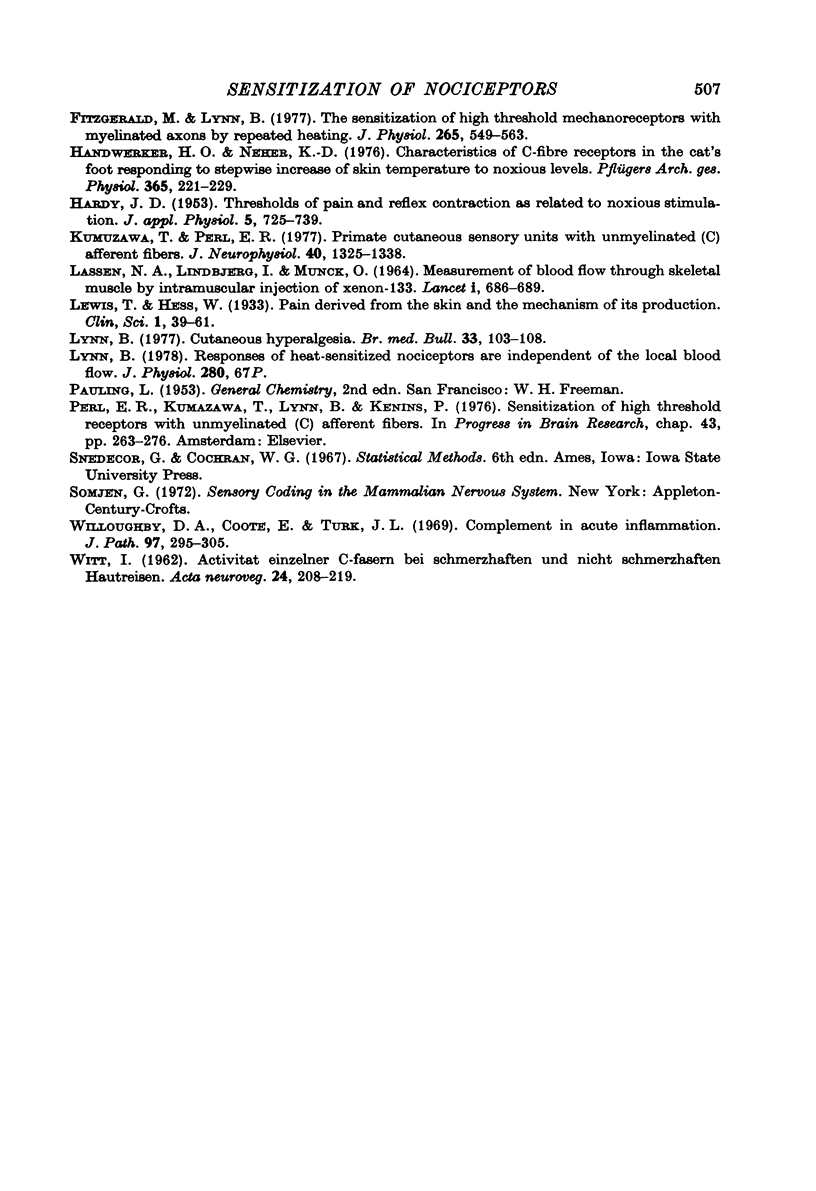
Images in this article
Selected References
These references are in PubMed. This may not be the complete list of references from this article.
- Beck P. W., Handwerker H. O., Zimmermann M. Nervous outflow from the cat's foot during noxious radiant heat stimulation. Brain Res. 1974 Mar 8;67(3):373–386. doi: 10.1016/0006-8993(74)90488-0. [DOI] [PubMed] [Google Scholar]
- Bessou P., Perl E. R. Response of cutaneous sensory units with unmyelinated fibers to noxious stimuli. J Neurophysiol. 1969 Nov;32(6):1025–1043. doi: 10.1152/jn.1969.32.6.1025. [DOI] [PubMed] [Google Scholar]
- Croze S., Duclaux R., Kenshalo D. R. The thermal sensitivity of the polymodal nociceptors in the monkey. J Physiol. 1976 Dec;263(3):539–562. doi: 10.1113/jphysiol.1976.sp011644. [DOI] [PMC free article] [PubMed] [Google Scholar]
- Echlin F., Propper N. "Sensitization" by injury of the cutaneous nerve endings in the frog. J Physiol. 1937 Jan 18;88(4):388–400. doi: 10.1113/jphysiol.1937.sp003448. [DOI] [PMC free article] [PubMed] [Google Scholar]
- Fitzgerald M., Lynn B. The sensitization of high threshold mechanoreceptors with myelinated axons by repeated heating. J Physiol. 1977 Feb;265(2):549–563. doi: 10.1113/jphysiol.1977.sp011730. [DOI] [PMC free article] [PubMed] [Google Scholar]
- Handwerker H. O., Neher K. D. Characteristics of C-fibre receptors in the cat's foot responding to stepwise increase of skin temperature ot noxious levels. Pflugers Arch. 1976 Sep 30;365(2-3):221–229. doi: 10.1007/BF01067022. [DOI] [PubMed] [Google Scholar]
- Kumazawa T., Perl E. R. Primate cutaneous sensory units with unmyelinated (C) afferent fibers. J Neurophysiol. 1977 Nov;40(6):1325–1338. doi: 10.1152/jn.1977.40.6.1325. [DOI] [PubMed] [Google Scholar]
- LASSEN N. A., LINDBJERG J., MUNCK O. MEASUREMENT OF BLOOD-FLOW THROUGH SKELETAL MUSCLE BY INTRAMUSCULAR INJECTION OF XENON-133. Lancet. 1964 Mar 28;1(7335):686–689. doi: 10.1016/s0140-6736(64)91518-1. [DOI] [PubMed] [Google Scholar]
- Lynn B. Cutaneous hyperalgesia. Br Med Bull. 1977 May;33(2):103–108. doi: 10.1093/oxfordjournals.bmb.a071408. [DOI] [PubMed] [Google Scholar]
- Lynn B. Responses of heat-sensitized nociceptors are independent of the local blood flow [proceedings]. J Physiol. 1978 Jul;280:67P–68P. [PubMed] [Google Scholar]
- Perl E. R., Kumazawa T., Lynn B., Kenins P. Sensitization of high threshold receptors with unmyelinated (C) afferent fibers. Prog Brain Res. 1976;43:263–277. doi: 10.1016/S0079-6123(08)64359-9. [DOI] [PubMed] [Google Scholar]
- Willoughby D. A., Coote E., Turk J. L. Complement in acute inflammation. J Pathol. 1969 Feb;97(2):295–305. doi: 10.1002/path.1710970215. [DOI] [PubMed] [Google Scholar]



